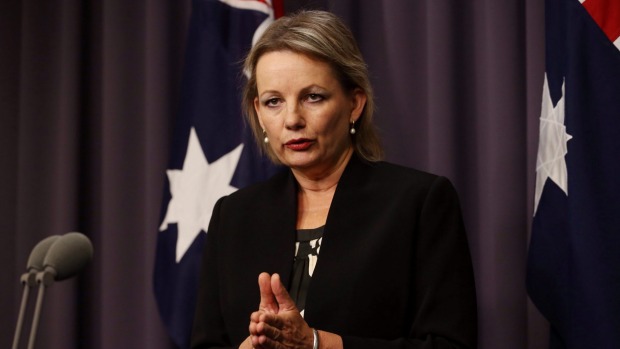
Minister for Health Sussan Ley has ruled out moving funding away from hospital beds towards community services. Photo: Andrew Meares
The Review into Mental Health Services by the National Mental Health Commission is the latest addition to more than 30 statutory inquiries into mental health over the past decade.
Rather than fix mental health, Australia prefers to inquire into it. Each inquiry confirms that Australia’s mental health system can best be characterised as being in crisis. Even this review, carefully crafted, makes it clear that our approach to mental health is wildly out of balance, with far too many resources directed to crisis response and far too few to earlier intervention.
The focus of this review was the Commonwealth and what it could do now to reform mental health within existing funding. I am not sure this is tenable given that mental health only gets about 5 per cent of the total health budget but represents 13 per cent of the total burden of disease.
However, the review does point out waste. One suggestion was that the Commonwealth redirect its future funding away from hospital beds and towards community services. Minister for Health Sussan Ley has already ruled this out and some professional groups and others have decried this as an attempt to close beds. This is nonsense. A national survey carried out in 2006 suggested that 43 per cent of all hospital beds were occupied by people who would be better off in other settings if those alternatives were available. We have enough beds already and in fact, resources are being wasted in this area.
The review sets a target to increase the rate of access to mental health care by 10 per cent each year. This is critical when overall rates of access to care are poor in relation to the general community and abysmal in relation to young people. While 75 per cent of all mental illness manifests before the age of 25, according to the Australian Bureau of Statistics, only 13 per cent of young men who had a mental illness last year got any help. Australia’s mental health “system” is weakest precisely where it should be strongest.
The review considers the Commonwealth’s Better Access Program which is now costing more than $12 million per week and growing. It finds significant inequity and maldistribution of services under this program and calls for better targeting. A greater role for regional planning is recommended though this is made more difficult with the advent of large Primary Health Networks instead of the smaller Medicare Locals.
Terrible recent reporting on suicide highlights Australia’s failure to reduce the rate of suicide and attempted suicide over the past decade. The review’s suggestion to focus a new suicide prevention strategy across 12 designated regions would be a welcome change from the desultory approach taken to date.
A target of reducing suicides and attempts by 50 per cent over the next decade is suggested. This kind of target-setting to spur activity is an approach taken in several other countries but would be new to Australia. The review calls for the establishment of a small set of indicators and measures by which to frame a new accountability for mental health. Our current approach is confused and largely outcome blind.
Importantly, the measures suggested in the review reflect matters of interest to consumers and their families, not just service and system numbers. Issues of housing, employment and quality of life are critical and poorly reported now but are vital to properly understanding what it means to experience mental illness in 21st century Australia.
After the review was initially leaked, Minister Ley put out a press release blaming the previous Labor government and setting up a range of new committees and advisory bodies under the Council of Australian Governments (CoAG). Australia tried using CoAG to fix mental health in 2006. While new investments were made, each state and federal jurisdiction had complete autonomy. A set of notionally agreed priorities was a veneer for a reality in which every government invested in different services and priorities. This perpetuated a situation in which the quality, type and quantity of mental health services available varies wildly depending on where you live. This latest review has confirmed that this approach is both unfair and inefficient.
Resources are limited and inadequate. Australia’s approach to a mental health system is a crisis-driven patchwork. More CoAG committees are not the answer. Communities understand the depth of this crisis. They know how vulnerable families are. The solution lies in properly resourcing sustained mental health reforms throughout every region in Australia. Now.
Sebastian Rosenberg is a senior lecturer, Mental Health Policy, Brain and Mind Research Institute, University of Sydney.
